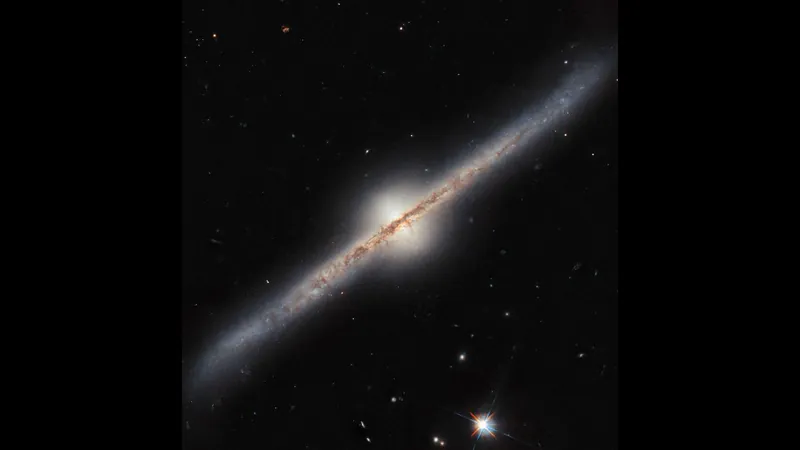
Unveiling the Cosmic Marvel: Hubble's 23-Year Saga Captures the Stunning Spiral Galaxy UGC 10043
2025-01-12
Author: Noah
This week, astronomy enthusiasts were treated to a breathtaking image of the spiral galaxy UGC 10043, located an astonishing 150 million light-years away in the constellation Serpens. Shared on December 12, 2024, this remarkable photograph marks a significant milestone in astronomical imaging, showcasing over two decades of dedicated observation.
What makes this image truly extraordinary is not just its stunning visuals, but the painstaking process that led to its creation. The Hubble Space Telescope, which has been in orbit since its launch aboard the Space Shuttle Discovery on April 24, 1990, has had the unique advantage of compiling data over an extensive period. The data used for the UGC 10043 image was meticulously collected during different observation sessions in 2000 and 2023, a testament to Hubble's enduring legacy and its capability to unlock the secrets of the cosmos.
Unlike most spiral galaxies—approximately 60% of all galaxies in the universe—UGC 10043 presents itself in an edge-on view, rather than the typical face-on perspective. This rare angle provides astronomers a unique opportunity to study its three-dimensional structure. While spiral galaxies are usually celebrated for their vibrant, sweeping arms, this image reveals UGC 10043's ring-like appearance, giving a different insight into its physical structure.
The striking image showcases conspicuous lanes of dust, which would otherwise reveal charming spiral arms if observed from a more conventional angle. These dust lanes obscure the bright glow of the stars within the galaxy, hinting at the presence of star-forming regions embedded within dark clouds.
At the heart of UGC 10043 lies an exceptionally bright core, which is notably larger than that found in most galaxies. Astronomers suspect that UGC 10043 may have experienced a collision with a nearby dwarf galaxy, resulting in an influx of dust and gas that has energized the formation of new stars. This potential collision could also account for the peculiar warping of the galaxy's disk, observed as it bends at opposite ends.
As the Hubble Space Telescope continues to capture the wonders of the universe, the image of UGC 10043 serves as a powerful reminder of the vast and dynamic nature of our cosmos. Who knows what other hidden gems await discovery in the depths of space? Stay tuned for more astonishing revelations from the final frontier!



 Brasil (PT)
Brasil (PT)
 Canada (EN)
Canada (EN)
 Chile (ES)
Chile (ES)
 Česko (CS)
Česko (CS)
 대한민국 (KO)
대한민국 (KO)
 España (ES)
España (ES)
 France (FR)
France (FR)
 Hong Kong (EN)
Hong Kong (EN)
 Italia (IT)
Italia (IT)
 日本 (JA)
日本 (JA)
 Magyarország (HU)
Magyarország (HU)
 Norge (NO)
Norge (NO)
 Polska (PL)
Polska (PL)
 Schweiz (DE)
Schweiz (DE)
 Singapore (EN)
Singapore (EN)
 Sverige (SV)
Sverige (SV)
 Suomi (FI)
Suomi (FI)
 Türkiye (TR)
Türkiye (TR)
 الإمارات العربية المتحدة (AR)
الإمارات العربية المتحدة (AR)